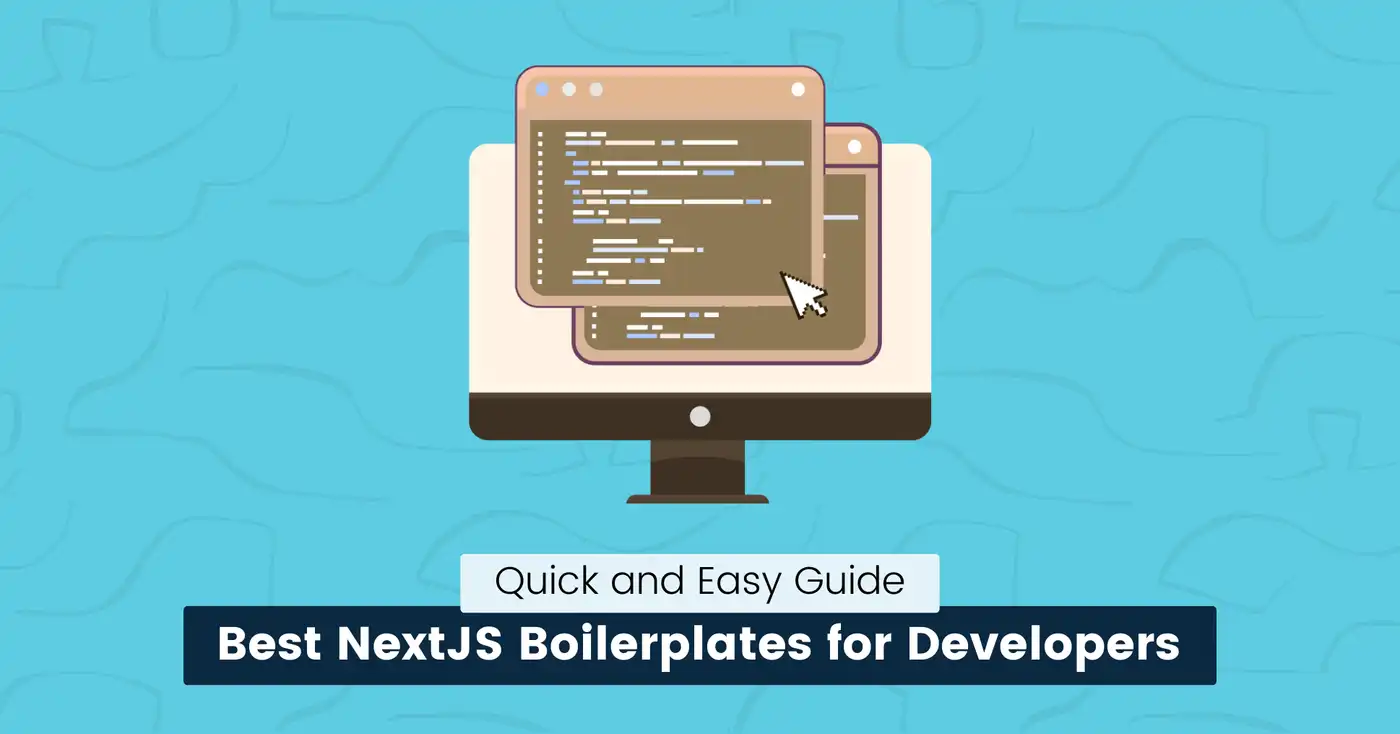
8 Best NextJS Boilerplates for Developers (2025)
Next.js is a popular open-source framework built on NodeJS that supports essential React-based features, such as server-side rendering and static site generation, making it a top choice for modern web applications.
However, starting a new Next.js project often means repeating tedious setup tasks, including configuring routing, styling, authentication, testing, and deployment.
That’s where Next.js boilerplates come in.
They provide pre-built, optimized foundations so you can skip building the features from scratch.
We’ve handpicked the best Next.js boilerplates that handle these core setups for you.
Use this list to jump straight into building your unique features on a solid, modern foundation and save significant time and effort from the start.
Why Use A Next.js Boilerplate?
A boilerplate is a pre-configured piece of code that is used to start new projects and can be reused without modification.
It’s a production-ready starting point with essential tools, patterns, and integrations that have already been built and tested.
Instead of starting with nothing, you start with:
- Common libraries, such as state managers, UI kits, and testing tools, are pre-installed.
- The code structure is organized logically, following best practices.
- Basic configurations already implemented and working.
It’s not your finished app but a strong foundation you build on top of.
Here’s why a good boilerplate wins:
- Skip Repetitive Setup: Stop wasting time re-installing the same dependencies, configuring authentication, state management, CI/CD scripts, testing tools, and styling approaches for every new project. A boilerplate gives you this instantly.
- Prevent Early-Stage Errors: Avoid misconfigurations in complex setups that cause issues later. Boilerplates are pre-tested and enforce working configurations from the start, preventing setup bugs.
- Create Consistent Code: If you work with others, a boilerplate ensures everyone starts with the same setup. This makes onboarding new developers much faster because the core structure is familiar. Everyone starts with the same conventions and tools, leading to more maintainable codebases.
- Faster Feature Development: Focus your energy on unique features, user experience, and building actual application logic rather than rebuilding existing components, form handling, or API integrations. This is crucial for startups and quick prototyping.
- Build More Securely: Security basics, such as environment variable handling, authentication flows, and linting rules for common vulnerabilities, are often pre-configured. You get a head start on security without being a full-time security expert.
- Scalability and Maintainability: Next.js boilerplates promote the clean separation of concerns (UI, logic, and data access) and a modular architecture, making the codebase easier to grow and manage.
8 Best Next.js Boilerplates
Here are our top Next.js boilerplate recommendations to help you save time during development.
Next.js Boilerplate
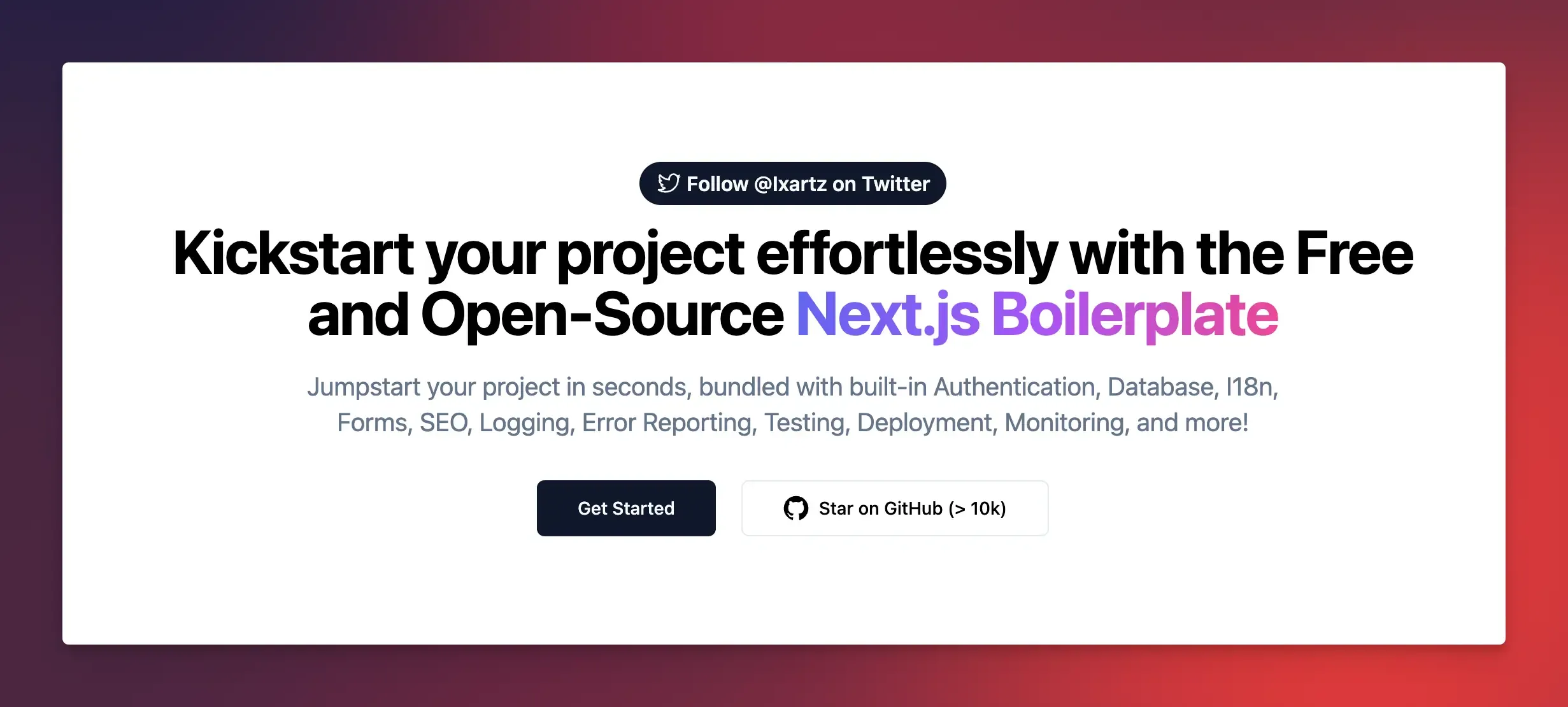
Next.js boilerplate is a free, open-source starter kit for launching Next.js projects quickly.
Created and actively maintained by developer ixartz, it bundles essential tools and pre-configured setups so you bypass weeks of initial configuration.
It is made with developer experience in mind and handles authentication, databases, testing, and deployment prep, so you focus solely on building new features.
You can add or remove tools as needed and create SEO-friendly, secure, and scalable projects.
Tech Stack: Next.js 15, TypeScript, Tailwind CSS, Drizzle ORM, Clerk, Playwright, ESLint, Prettier, Husky.
Key Features:
- Full-stack starter with App Router support.
- Built-in logins, password resets, and user profiles.
- Bot protection and rate limiting with Arcjet.
- End-to-end tests (Playwright), unit tests (Vitest), and visual regression checks.
- Prebuilt templates for pages/components.
- Local DB (PGlite) + production PostgreSQL.
- 11.1k GitHub stars.
Price: Free
ShipFast
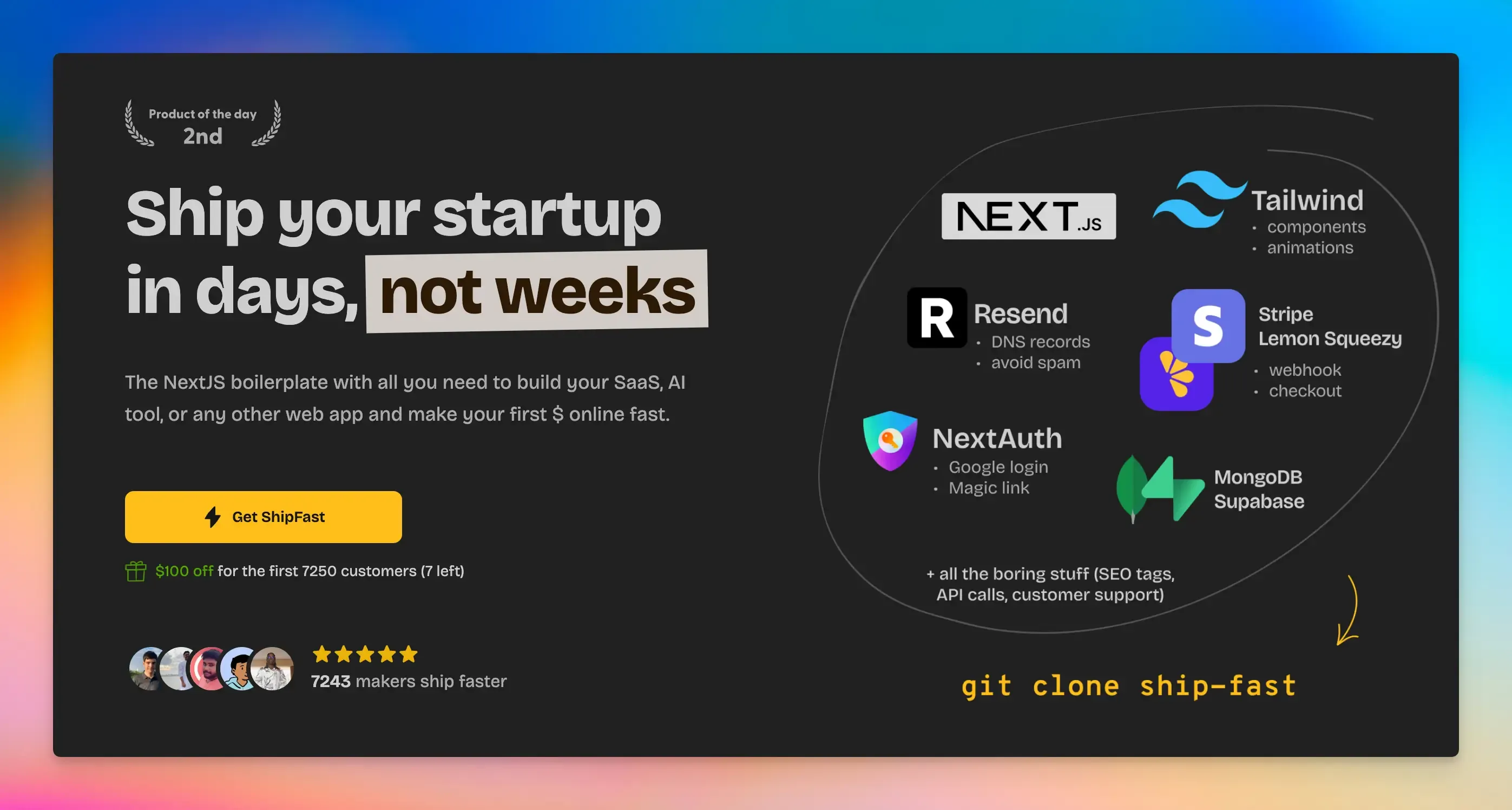
ShipFast is a premium Next.js boilerplate that helps accelerate the development and deployment of SaaS apps and AI tools.
It offers pre-built tools, components, and configurations for features such as payments, user logins, emails, and more so you can start building your product immediately.
For teams prioritizing speed to market, ShipFast eliminates infrastructure issues, enabling you to ship SaaS products faster.
Tech Stack: Next.js, React, Tailwind CSS, NextAuth, Stripe, MongoDB, Supabase.
Key Features:
- Pre-built SaaS essentials like payments, authentication, and transactional email templates.
- Copy and paste UI sections and components, such as buttons, modals, pricing tables, FAQs, and blogs.
- SEO optimization, database setup, and API integrations.
- AI prompts to auto-generate legal pages.
- Dark mode is included by default.
Price: $199
SaaSBold
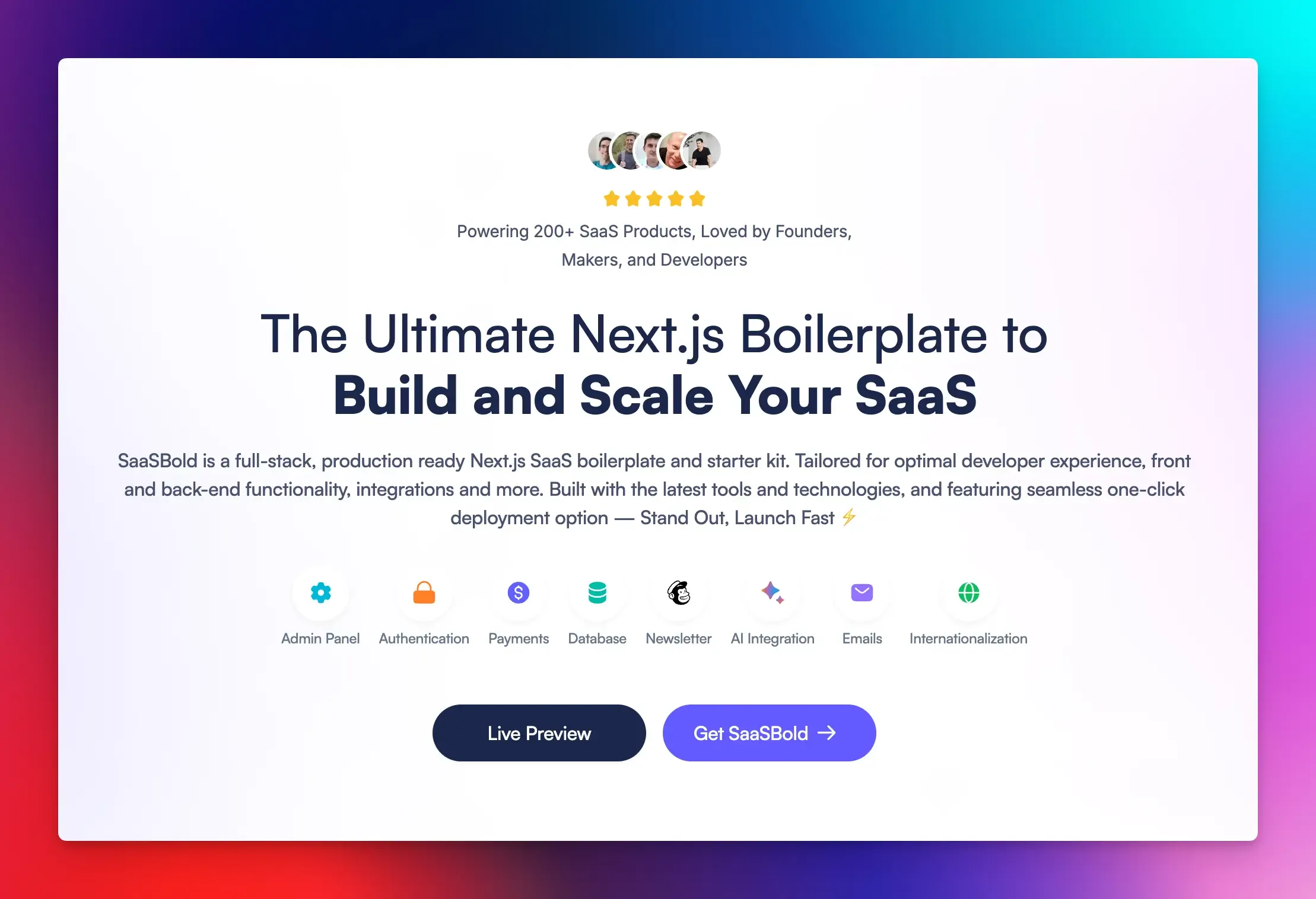
SaaSBold is a production-ready, full-stack boilerplate for developers who want to launch SaaS products fast.
Built on modern web technologies like Next.js, it bundles all essential features, including authentication, payments, databases, dashboards, and more, into a single, pre-configured toolkit.
Instead of spending months building these components from scratch, SaaSBold provides a fully functional starting point, allowing you to focus on your business logic and launch in days.
Tech Stack: Next.js 15, React, TypeScript, Tailwind CSS, Prisma ORM, PostgreSQL, Auth.js, Sanity, Figma.
Key Features:
- Ready-made interfaces for managing users, subscriptions, and analytics.
- Stripe integration for subscriptions, one-time payments, and pricing pages.
- Secure logins via email, Google, and GitHub.
- PostgreSQL + Prisma integration for easy data management.
- Send transactional emails via Resend and manage newsletters with Mailchimp.
- Add OpenAI features, such as chatbots or analytics, by simply plugging in your API key.
- Support for multiple languages to reach global users.
- The free Lite version has 129 GitHub stars.
Price: $149
Next-forge
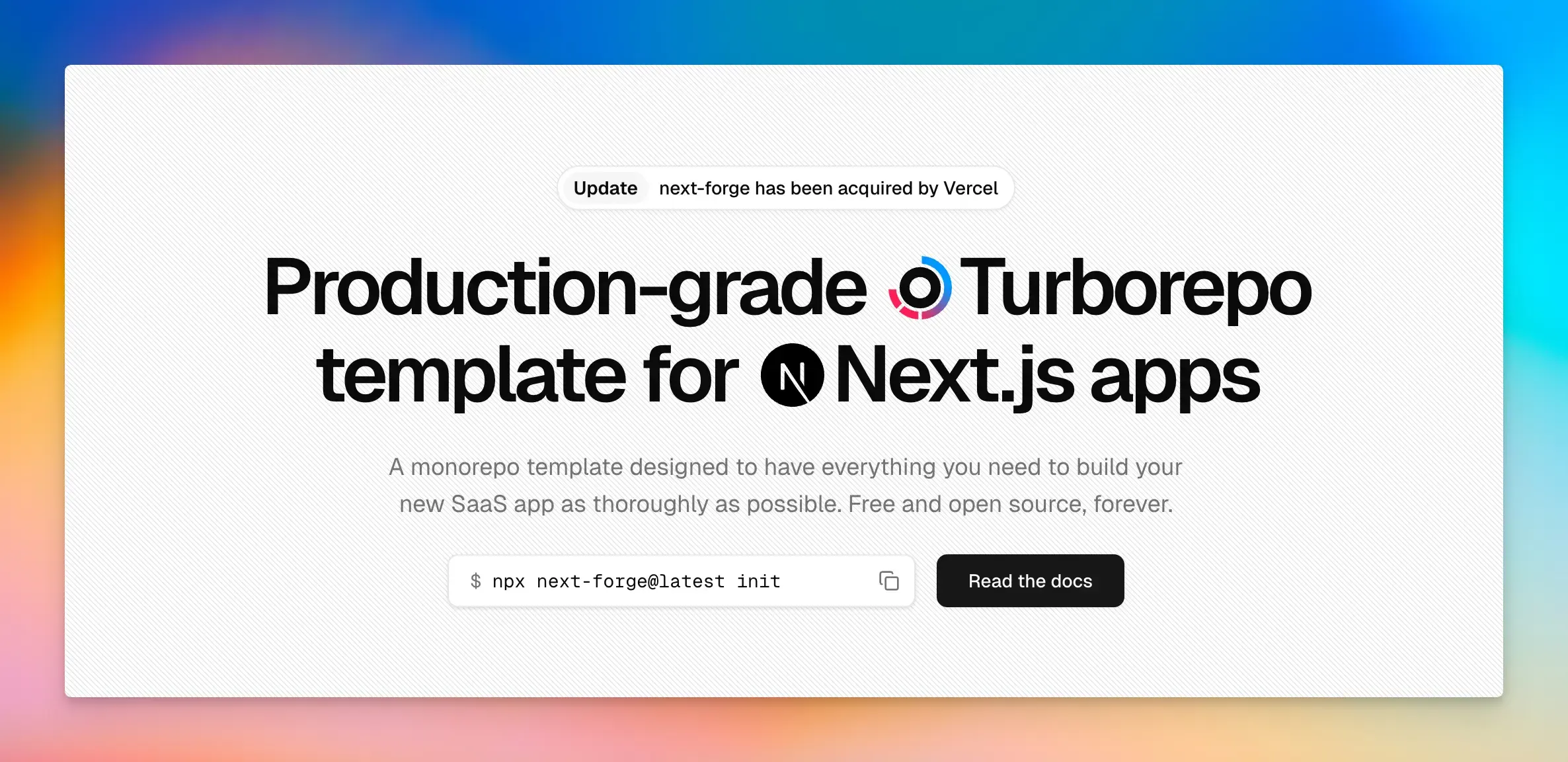
Next-forge is an open-source boilerplate that offers a production-ready starting point for building Next.js applications.
Its monorepo architecture organizes code into separate apps within one repository, simplifying the sharing of code between the front-end, back-end, and utilities.
Tech Stack: Next.js, React, TypeScript, Tailwind CSS, Radix UI, Prisma, Clerk, Turborepo.
Key Features:
- Monorepo-ready with end-to-end type safety.
- Ready-made templates for apps, APIs, and React email templates.
- Automated testing (Vitest, Playwright) and error monitoring (Sentry).
- Stripe payments, analytics, or in-app notifications with pre-configured packages.
- Optimized for Vercel deployments.
- 6.2k GitHub stars.
Price: Free
ChadNext
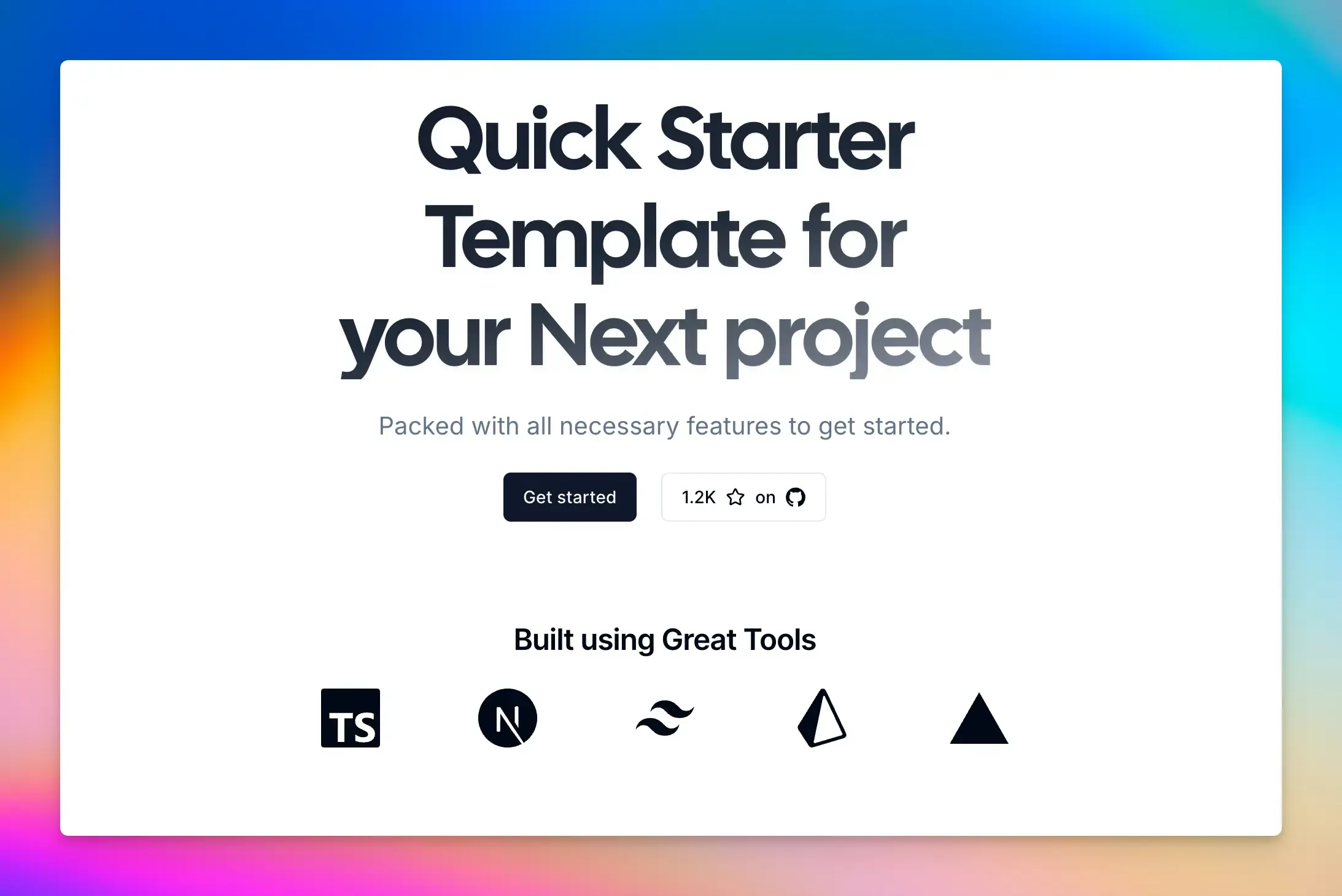
ChadNext is an open-source boilerplate that gives developers a fully equipped starting point for building modern web applications.
It strikes a balance between flexibility and production-grade reliability, making it an ideal choice for startups, SaaS products, or content platforms.
Tech Stack: Next.js, React, TypeScript, Tailwind CSS, Shadcn UI, PostgreSQL, Prisma ORM, Stripe, Umami, Vercel.
Key Features:
- User authentication and authorization with LuciaAuth.
- Easy drag-and-drop file uploads and previews using UploadThing.
- Multi-language support for international audiences.
- Built-in blog and change-log system using Markdown and Velite.
- Dashboards for managing users, payments, and content.
- 1.2k GitHub stars.
Price: Free + paid ($10/month)
Cascade
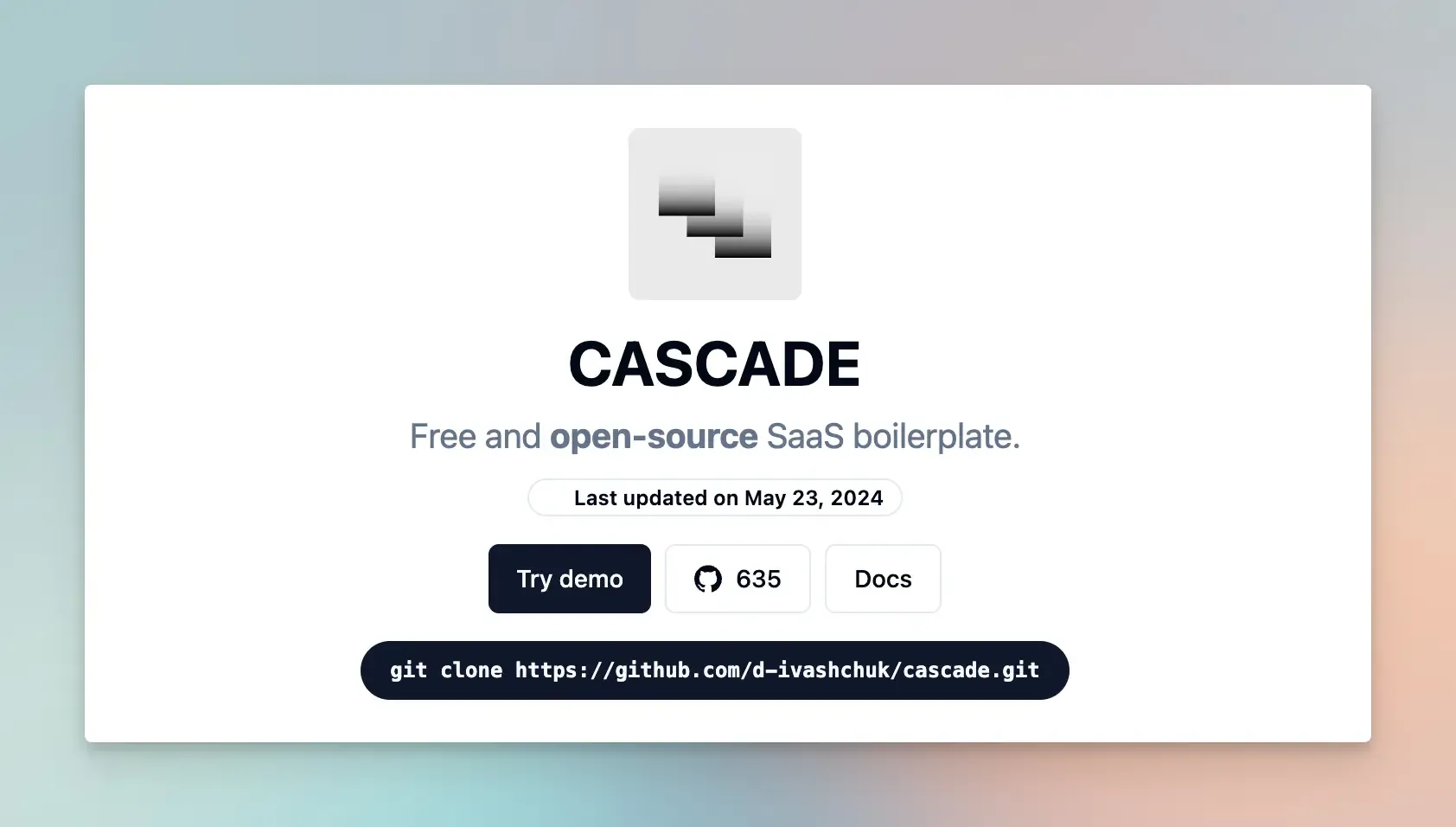
Cascade is a SaaS boilerplate designed specifically for developers launching Next.js applications quickly.
It is perfect for startups validating ideas because it is built to handle scalable growth and saves hundreds of hours by removing setup for payments, authentication, and DevOps.
Tech Stack: Next.js, TypeScript, tRPC, Prisma, Tailwind CSS, Auth.js, Sentry, Storybook, Plausible.
Key Features:
- Pre-built sign-up/log-in flows with NextAuth.js.
- Integrated Lemon Squeezy for billing, subscriptions, and one-time payments.
- Built-in blog engine, SEO optimization, and analytics dashboards to attract users and track growth.
- Background tasks (email alerts, data sync) via Trigger.dev.
- 635 GitHub stars.
Price: Free
Achromatic
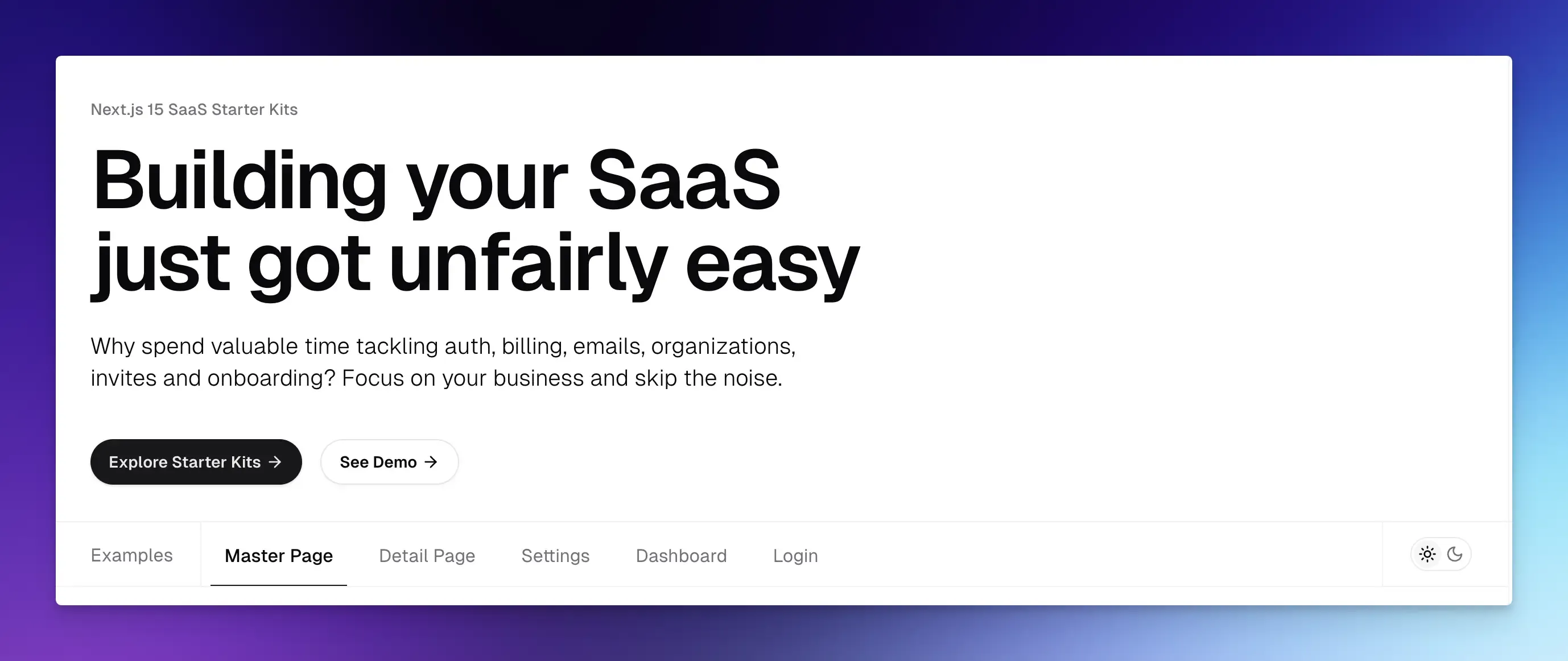
Achromatic is a premium Next.js starter kit designed to help developers launch full-stack SaaS applications.
It prioritizes flexibility, modern tooling, and real-world usability, making it ideal for startups, individual developers, and teams seeking to accelerate their development cycle.
Tech Stack: Next.js, React, TypeScript, Shadcn UI, Prisma, Auth.js, React Hook Form.
Key Features:
- A clean Turborepo setup for scalable development.
- Responsive design that works on all devices.
- Ready-to-use components for credentials and multi-factor authentication.
- Integrated Stripe support for handling payments and subscriptions.
- Pre-built templates for dashboards, settings, and billing pages.
Price: $180
Supastarter
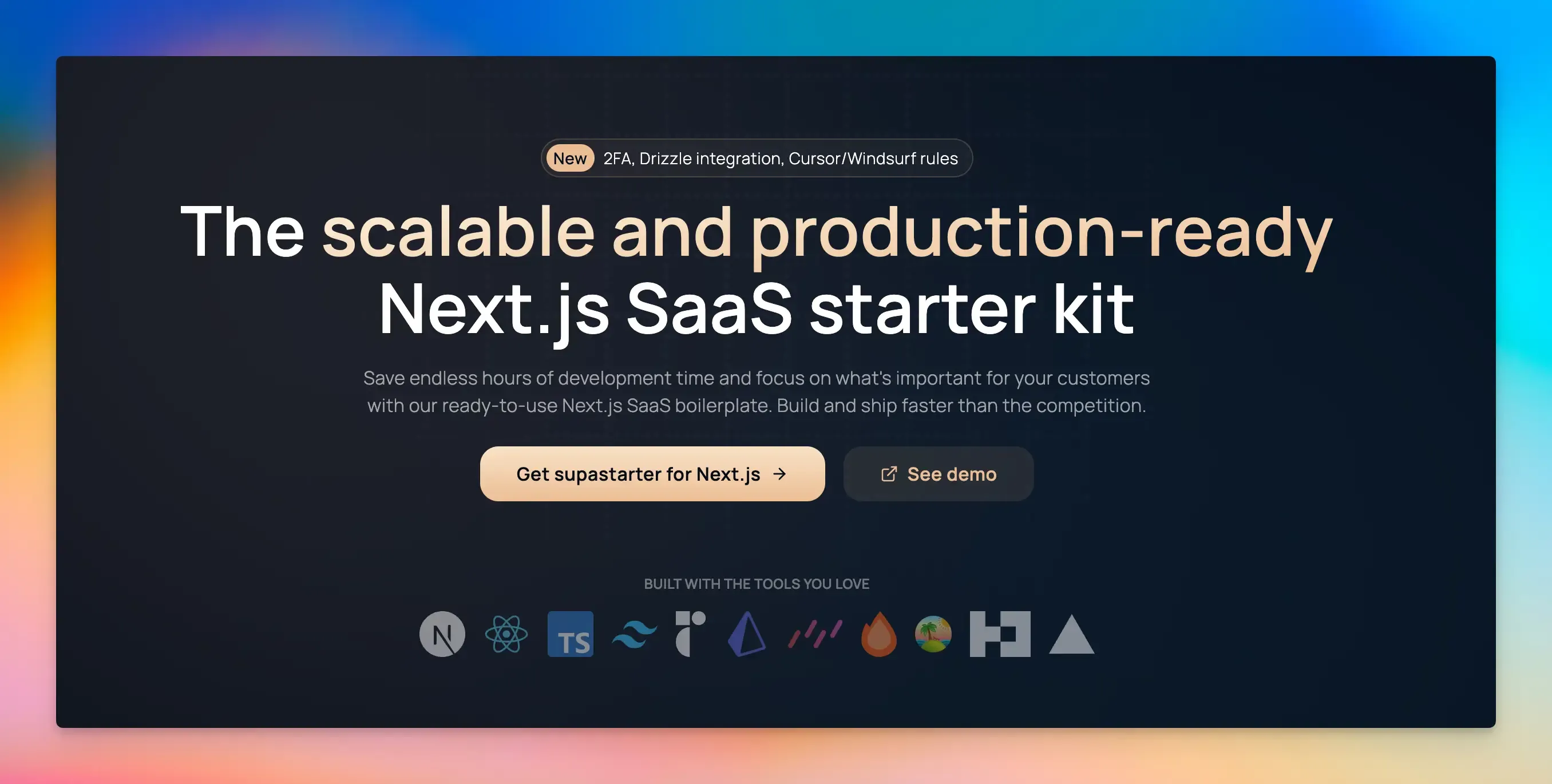
Supastarter is a Next.js boilerplate specifically designed to accelerate the development process by providing a fully functional foundation for building SaaS applications, including authentication, payments, and database integration.
Tech Stack: Next.js, React, TypeScript, Tailwind CSS, Radix UI, Prisma, Drizzle, Stripe, Lemon Squeezy.
Key Features:
- Let users sign in with email, social accounts, or passwordless magic links.
- Includes extra security like 2FA and user-role controls.
- Ready-made systems for subscriptions or one-time payments.
- Translation for multiple languages to attract international users.
- Add chatbots or AI features quickly using OpenAI.
- Includes a marketing blog and tools to track user behavior.
- Works with PostgreSQL, MySQL, or MongoDB.
Price: $299
Common pitfalls and drawbacks of using Next.js boilerplates
- Avoid overly complex boilerplates. Select one that suits your project’s needs (e.g., a simple blog vs. a complex SaaS).
- Always prioritize maintenance. A boilerplate with outdated features or unmaintained libraries is worse than starting fresh. Check the commit history and issue tracker.
- Understand the code structure, dependencies, and configuration. Know how and why things are set up.
- Use the boilerplate as a starting point. Adapt it to your specific requirements, but don’t undermine its essential best practices without a valid reason.
Final Words
We have compiled a list of the best Next.js boilerplates, including both free and paid options.
Choose the one that suits your needs, and you’ll save weeks of work.
If you like this article, don’t forget to check out:
FAQs:
Can I switch boilerplates mid-project without having to rebuild everything?
While migrating entirely is complex, modern boilerplates like Next-forge (Turborepo-based) and Cascade (T3 Stack) use modular architectures. You can gradually implement functionality such as authentication flows or UI systems.
How do we evaluate boilerplate maintainability beyond GitHub stars?
Check dependencies, issue resolution speed, and major version upgrades. Avoid starters with more than six months since the last update.
